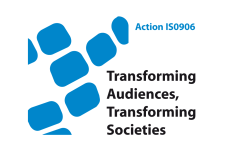- About the Action
- Events
- PhD workshop - Ljubljana 2014
- Action Open Conference - Ljubljana 2014
- New Media and Participation conference - Istanbul 2013
- Belgrade meeting 2013
- Media literacy research and policy - Brussels 2013
- ICA Pre-Conference 2013
- Tampere meeting 2013
- Budapest workshop 2012
- Milan meeting 2012
- Brussels PhD workshop 2012
- Brussels Action workshop 2012
- London meeting 2011
- Zagreb Conference 2011
- Lisbon meeting 2010
- Affiliated events
- WG 1
- WG 2
- WG 3
- WG 4
- Cross-WG
- Output
Studying audiovisual media consumption in the age of convergence
Courtois, C. (2011). Studying audiovisual media consumption in the age of convergence. Zagreb conference: "New challenges and methodological innovations in European media audience research". 7-9 April 2011.
Abstract: In recent years, the choices to consume audiovisual content have increased steadily. Due to the digitization process of audiovisual workflows, digital content is abundantly available through various channels. Likewise, the diversity in devices to play back this digital content has increased exponentially. It is no longer the sole prerogative of the television set. Different forms of computers and mobile devices have joined the field too. Consequently, the number of spatial and social contexts that afford the consumption of audiovisual content is potentially increasing. The question now arises how these three diversifying components (content, device and context) interact with each other. Therefore, we subscribe to the concept of a triple articulation of media technologies that is rooted within domestication theory (Hartmann, 2006). It postulates that media technologies are meaningful in their physical presence (object), their capabilities to transfer meaningful messages (media text) and their contextual encapsulation (context). However, the question remains whether such a three-fold approach is manageable and relevant (Hartmann, 2006; Livingstone, 2007). In my presentation, based on an empirical multi-method study, I demonstrate the practical relevance of the triple articulation concept in audiovisual media consumption within the context of convergence. Moreover, I discuss its implications and formulate recommendations concerning the adoption of this perspective in future research on audiovisual media consumption. For instance, it has the potential of serving as a framework to study relevant factors in the formation and exercise of media habits and everyday routines.

